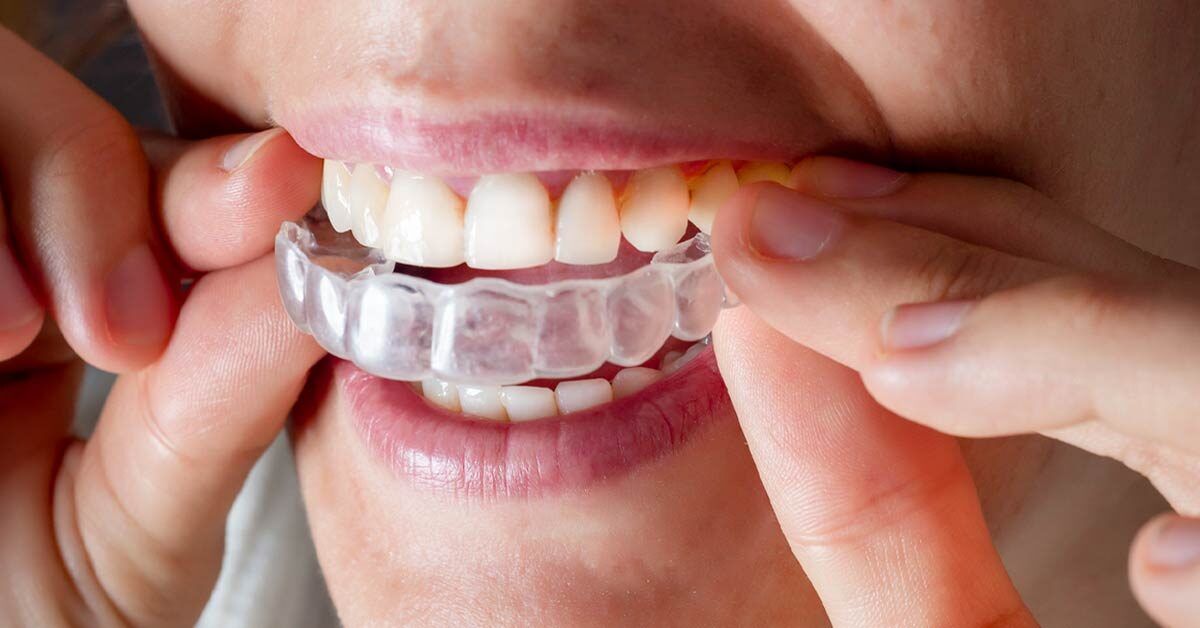Invisalign Las Vegas is a popular orthodontic treatment for adults and teenagers who don’t want to wear metal brackets and wires. It involves wearing clear BPA-free plastic aligners that gradually shift your teeth into their final position.
Each tray moves your teeth differently by rotating, tipping, pivoting or pushing them into the gums. Every 1 to 2 weeks you switch to the next tray in the series.

The cost of Invisalign varies depending on the patient’s financial situation. Some dental insurance plans cover clear aligners, and many patients are eligible for financial assistance through their workplace benefits programs. These include flexible spending accounts (FSAs) and health savings accounts (HSAs), which allow employees to set aside pretax dollars to pay for certain medical expenses, including Invisalign treatment.
The Invisalign price includes digital impressions, the time to put together the treatment plan, and 20 to 30 aligners. The level of complexity of the case also affects the cost. A simple alignment case is less costly than a comprehensive package. It’s important to find an honest dentist that can explain the level of complexity of your teeth alignment case and the corresponding Invisalign package.
Your dentist may recommend some pretreatment procedures before starting Invisalign, such as fixing periodontal problems or addressing large amounts of decay. These procedures can also improve the outcome of your Invisalign treatment and give you a more attractive smile. Some dentists even offer post-Invisalign treatments to help your teeth look their best.
You can reduce the costs of Invisalign by finding a reputable dental office that offers tiered pricing. Many dentists charge a fixed price for every Invisalign case, but it’s important to ask your dentist if they have tiered pricing, which could save you thousands of dollars on your treatment.
You can also apply for third-party financing, which can reduce your costs and spread payments out over a period of 12 to 48 months. These types of financing are available from lenders that specialize in dental and medical loans. Many companies offer 0% promotional periods, making the loan affordable for almost any budget. Before you apply, make sure you have your job history and banking records handy. It’s a good idea to limit how many lenders you contact, as applying with multiple different providers can have a negative impact on your credit score.
Treatment Time
The treatment duration will vary, depending on your dental issues and how you respond to the procedure. For example, if you have more severe crowding or spacing problems, it may take longer to close the gap. This is because there is a greater distance to cover, and the teeth have more resistance when moving.
Invisalign treatment involves wearing clear plastic trays that slowly shift your teeth into place for a straight smile. Your doctor will create a customized plan that includes several sets of trays, each designed to move your teeth slightly closer to their final positions. You’ll wear each set for two weeks, switching to the next one as prescribed by your doctor. This will continue until your teeth are straight. Your doctor will also recommend that you wear a retainer once your treatment is complete to keep your teeth in their new position.
It’s important to remember that the trays only work if you wear them regularly. If you don’t wear them enough, it can delay your results and prolong the duration of the process. This is why it’s crucial to stick to the schedule, and make sure you’re not forgetting to switch to a new tray. In addition, you should brush your teeth before putting in the trays to prevent food build-up.
You’ll also need to visit your dentist regularly for checkups, so they can see how well you’re doing with the trays and make adjustments if necessary. They’ll also take x-rays to determine whether there are any hidden issues with your teeth that you might not be aware of. Invisalign is a convenient and effective way to correct your smile, but it takes time and dedication.
Comfort
Invisalign is more comfortable than traditional braces because it does not have wires or brackets that can irritate the gums. The trays are also clear so they are less noticeable to others. Additionally, they are easier to remove when eating or brushing teeth. Lastly, they do not leave nicks or cuts in the mouth like fixed metal braces can.
However, some patients experience discomfort with their Invisalign aligners. They can alleviate this pain by using over-the-counter medications like ibuprofen and acetaminophen as directed. They can also use orthodontic wax to cover sharp edges or rubbing points on the aligners. In addition, they should always clean their aligners thoroughly and follow their dentist’s recommendations for food restrictions.
Despite the occasional discomfort, most Invisalign patients report that their treatment is not painful. The most important thing to remember is that the process is temporary, and it will eventually lead to a beautiful smile. It is also helpful to find a supportive community of people to encourage and uplift you during your journey. Moreover, it is beneficial to prioritize self-care activities, such as eating well, exercising, and sleeping enough.
Moreover, some patients find that their Invisalign treatment improves their psychological wellbeing by boosting their confidence in social interactions. Invisalign can also improve TMD and obstructive sleep apnea symptoms, which are caused by misaligned jaws. The treatment can even help prevent the development of cavities, gingivitis, and stains on the teeth. It can also reduce or stop snoring, which is a common problem associated with TMD and obstructive sleep. However, it is important to note that Invisalign is not effective for all problems and may be less effective than fixed metal braces in some cases.
Distractions
Invisalign is an alternative to traditional braces that helps straighten teeth. It uses clear plastic aligners that are custom-made to fit in the mouth. However, the aligners can cause discomfort when you first start wearing them. The pain is a normal part of the process and should go away within a few days. However, there are a few things you can do to ease the pain. You can take over-the-counter pain relievers like ibuprofen to reduce inflammation and soreness. You can also rinse your mouth with warm salt water to soothe the irritation. Additionally, you can suck on ice cubes to help numb the area affected by Invisalign discomfort.
You should eat soft foods that don’t require much chewing while you wear Invisalign. You should also avoid hard and crunchy foods that may irritate your mouth. If you have to eat these foods, try to chew them with your tongue and lips closed. Also, you should use a soft-bristled toothbrush and avoid brushing your teeth too vigorously, as this can cause tooth sensitivity.
If you have a lot of pressure on your teeth when you wear Invisalign, you can try using an elongated mouthguard to reduce the pressure. You can get these from your dentist, or you can buy one at a pharmacy or online. This will protect your teeth from damage while you are undergoing Invisalign treatment.
One of the biggest challenges patients face when wearing Invisalign is dealing with sharp attachments. These small fixtures are attached to the teeth to give the aligners a grip on them, but they can hurt when you bite or chew. Fortunately, there are a number of ways to overcome this issue, such as using a soft-bristled brush and applying orthodontic wax to the outside of your mouth. You should also schedule regular dental appointments to monitor your progress and address any problems.
Eating
During Invisalign treatment, patients must follow strict dietary guidelines to minimise complications and achieve desirable results. Ignoring these dietary restrictions can affect your oral health, delaying the outcome of your treatment and increasing the risk of infection or gum disease. Avoiding sugary foods and acidic drinks also reduces your risk of tooth decay and cavities. If you are planning to eat or drink anything, make sure it is a light or clear beverage. Highly pigmented liquids, like tea and coffee, can stain your aligners.
Invisalign can impact your eating habits by requiring you to remove your aligners before meals and brush and floss before reinserting them. If you don’t remove your trays before you eat, food particles can get stuck between your teeth and the aligners, causing plaque buildup that increases the risk of tooth decay and gum disease. Chewing tough, crunchy or sticky foods can also damage your aligners and cause them to shift out of alignment, which could slow or halt your Invisalign treatment.
The Invisalign diet can also encourage drinking more water, as the trays can dry your mouth out. However, be careful not to overdo it as excess fluid can stain the trays and your teeth. You can minimise this risk by using a straw when you are drinking non-staining liquids like water and milk.
Invisalign can correct a number of dental issues, including structural problems such as crooked or misshapen teeth and functional problems such as bite alignment and difficulty speaking or breathing due to crowded teeth. It can also improve a patient’s self-image and confidence, boosting their quality of life. A straight smile can boost a person’s chances of success in job interviews, social engagements and public speaking opportunities.
